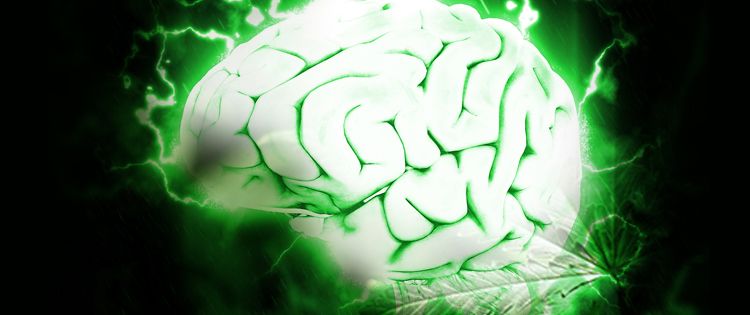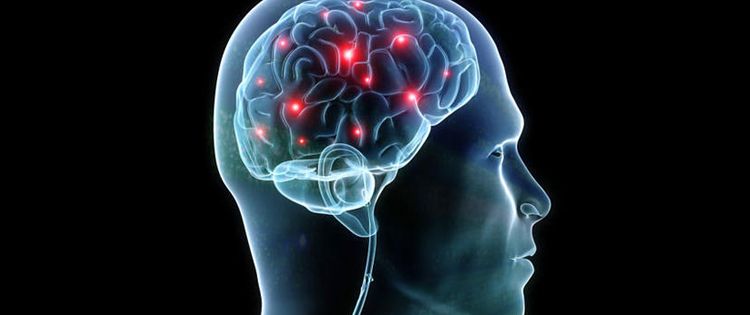Lately, there has been much talk about the amazing possibilities that cannabis holds in advancing our understanding of medicine. Currently, there have been many promising stories of people who use various forms of cannabis to recover from all kinds of illness.
However, the research is just beginning to shed some light on how it all works.
Much research requires an understanding of how Cannabis works within our body to produce the healing effects we want. With the discovery of Tetrahydrocannabinol (THC), eventually came to the discovery of the Endocannabinoid System (ECS). The discovery of a natural cannabinoid system within our bodies has provided our first steps to discover even more about the wonderful healing potential of the Cannabis Sativa plant.
I will introduce the building blocks of the ECS system- the Cannabinoid receptors, and how they work alongside Cannabis to produce the effects that are fascinating scientists. Where are they? How do they work? And most importantly…what do they do?
The Endocannabinoid System

Within the Endocannabinoid System (ECS) there are three major known receptors;
CB1 (Cannabinoid Receptor 1)
CB2 (Cannabinoid Receptor 2)
TRPV1 (vanilloid receptor-type 1)
CB1 and CB2 are the prime target of cannabis (hence the namesake), they are very important when it comes to understanding the healing properties of the Cannabis Sativa plant. And while research currently suggests the existence of more types- CB1 and CB2 currently hold the key to the future of research.
These two receptors are abundant in many parts of the body- even the skin! And is what helps the ECS to run smoothly. Fascinatingly enough, recent studies have found a third receptor has also joined the ECS party- the TRPV1. And while it is not a cannabinoid like CB1 and CB2, scientists are finding that it responds quite well to anandamide.
So….cannabinoids don’t just work alone- they also recruit help from somewhere else!
If you want to learn more, in the below video by Dr John Teh explains how our endocannabinoid system works in more details:
How it all works together
So….. how does it all work? That depends on the receptors and their individual jobs. However, receptors can be quite picky as to which messages they choose to listen to- and when. This all depends on a process called Binding Affinity.
This is quite important!
Binding affinity simply refers to how strongly a binding-chemical (called a ligand) is attracted to a receptor on a cell. Once attracted, it binds to the receptor….and either blocks (As an Antagonist) – or increases the cell’s activity (An agonist). This is how a ligand “communicates” with a cell. Very much like a light switch.
Endocannabinoids are ligands that bind with Cannabinoid receptors- thus, they work together to start a reaction.
Introducing the Cannabinoids and Endocannabinoids
Endocannabinoids
Anandamide is a ligand–and the first endocannabinoid to be discovered. It is well known for being the “bliss chemical” which controls how good we feel. In fact, dark chocolate has been found to have chemicals very similar to anandamide!
Anandamide is found in low quantities within the body and typically binds with CB1, CB2 and TRPV1 receptor sites as an agonis. This means it behaves like an “on switch”. This is supposed to help monitor many functions in our body; such as our mood, appetite and memory by promoting reward pathways in our brain.
For further information on Anandamide
Cannabinoids
As mentioned before, the CB1 and CB2 are located throughout the body– particularly within the nervous and immune system. They control many aspects of our body’s internal environment and how we perceive our current health- through our mood management, emotions, the pain that we feel…even how our body responds to illness and inflammation. They all work together to tell us when something is amiss.
So how does it all fit into place?
CB1 receptors were the first to be discovered, and are currently the most understood of the cannabinoids. They have been found to be mainly concentrated within the cells of the central nervous system (CNS), which involves the brain and spinal cord. In particular:
Cerebellum
Basal ganglia
Hippocampus
Spinal Cord
These are the areas of the brain which moderate our pleasure, reward pathways, cognition, memory…even how we move.
CB2 receptors were the second to be discovered- and are mainly located within the spleen and white blood cells (a recent study even suggests they are located in the brain as well). And while we still need more research before we fully understand how exactly they work, CB2 has gained much interest within the medical community due to emerging evidence of its beneficiary role helping the immune system.
In fact, CB2 has been shown to mediate the release of cytokines, which helps manage inflammation within the body.
TRPV1 receptors are widespread and are highly sensitive to noxious stimuli- which means they react very strongly to things that cause us pain- such as burning. In fact, research indicates that they may have plenty to do with the pain we feel from inflammatory diseases (such as IBS…even cancer).
TRPV1 receptors have been found to readily accept anandamide- just like its cannabinoid cousins. That holds some exciting news for how we can manage complex pain using cannabis.
To simply look at it, CB1 helps regulates our emotional and cognitive perception, whilst CB2 moderates our anti-inflammatory and immune response. TRPV1 is what helps alerts our body when something is terribly wrong- an alarm system. These all work together to help us perceive our general state of wellbeing.
The Phytocannabinoids
There are over 80 chemical compounds found within the Cannabis Sativa plant, which are called Phytocanabinoids. THC is the most well known, because of how well the body absorbs it- and for the feelings of euphoria that come with its psychoactive effects. However, recently another phytocannabinoid has gained interest- Cannabidiol (CBD), because of its amazing healing properties- without the psychoactive side-effects of THC.
Tetrahydrocannabinol (THC) primarily acts on the CB1 receptors in the CNS as an agonist, binding to them and switching them on. This which would explain the perception of ‘feeling high’, memory impairment and the slow movement that many of us associate with cannabis- use.
Cannabidiol (CBD) on the other hand, appears to bind more readily to CB2 receptors in the immune system, with lower interactions with CB1. CB2 receptors have key involvement in managing inflammation. This proves a potential benefit to providing treatments to help improve better use of the anti-inflammatory properties of the plant…without activating the same functions as THC in the CNS.
In the below video Dr Teh, Cannabinoid Clinician explains how THC and CBD work in our body and what conditions they are best used for:
The relationship between Cannabis and the ECS
Essentially how Cannabis works, is that it actually mimics the same shape- and function! Of anandamide. This is how the body is able to readily accept it into the neural system in the same way it would have done for its endocannabinoid copy. For example…THC.
However, since THC is harder to break down than Anandamide, it takes longer to break down after it’s done the job. This is why we feel the “high” and maintain short-term memory loss after use. That is also why we should always source the right amount (and dose) of THC at any given time.
The future of Medical research
Dr Daniele Piomelli, Professor of Anatomy & Neurobiology stated-
“Understanding how those functions work may allow some of the positive medicinal effects of anandamide and THC to be exploited therapeutically- without most of the negative effects.”
Studies have highlighted the therapeutic benefit of therapies targeting the ECS for treating many conditions such as mood and anxiety disorders, multiple sclerosis, movement disorders, neuropathic injury, cancer, chronic pain, metabolic syndrome…even obesity!
THC is only one, out of several forms of Phytocannabinoids that open the doors for us. Currently, the healing abilities and health benefits cannabidiol (CBD) and cannabinol (CBN) are being studied to see what the future holds within their properties. Modern scientists have even suggested that cannabinoids may, in fact, interact with many kinds of cells! This really helps us to begin understanding how complex healing can be, and just how valuable cannabis is as a treatment option in its ability to tap into ‘the natural cure flow’ of the body.
This is all, however. Still within the first stepping stones of the world of possibilities that await cannabis. There are still barriers, largely those involved with the psychoactive effects of THC, and the potential issues it may cause with memory deficits, heart problems, and psychotic/anxiety disorders- if misused.
Great care must still be taken when approaching THC as a form of proper treatment or recreational pastime…and ensure that it comes from an approved source, to ensure continued safety that will encourage the good name of marijuana in the science community.
Do you have any scientific inquiries about how Cannabis works and impacts the human body?
Tell us in the comments below, and we might write about it!
- Going Anti-Malaria with Marijuana - March 17, 2017
- Wasting Away- How Cannabis Helps AIDS Patients - February 10, 2017
- Cannabis: The Hidden Cure for Bone Disease - January 18, 2017


